As a BetterHelp affiliate, we receive compensation from BetterHelp if you purchase products or services through the links provided
Are you tired of tossing, turning, counting sheep, or scrolling through your phone, hoping sleep will magically arrive? If you nodded yes, you’re not alone. So many of us struggle to find that blissful, uninterrupted slumber. But guess what? I’ve discovered a secret that might be the game-changer you need: Yoga Nidra for sleep.
Now, I know what you might be thinking: “Yoga? Isn’t that about twisting into pretzel-like shapes?” Well, not this time! Yoga Nidra is like a guided meditation that invites you into deep relaxation, and the best part? You can do it lying down in your comfiest pajamas.
In this blog post, we’re diving into the world of Yoga Nidra and exploring how it can lead us to those coveted restful nights. Here’s a sneak peek of what we’ll cover:
- What is Yoga Nidra? We’ll demystify this ancient practice and see how it’s different from your regular yoga session.
- The Science Behind It: Yes, there’s actual science that explains why Yoga Nidra can be a powerful tool for better sleep.
- Step-by-Step Guide: Don’t worry; I’ve got you covered with a beginner-friendly guide to get you started.
- Personal Experiences: I’ll share some real-life stories (including my own!) about how Yoga Nidra transformed bedtime struggles into peaceful zzz’s.
- Tips & Tricks: Ensure you get the most out of your Yoga Nidra experience.
So, grab your coziest blanket, and let’s embark on this journey to dreamland together. Ready to turn those restless nights into restful ones? Let’s go!
What is Yoga Nidra?
Yoga Nidra is a profoundly relaxing meditation and guided relaxation practice.
Definition of Yoga Nidra
Yoga Nidra is a yogic practice that translates to “yogic sleep” or “psychic sleep.” This systematic form of guided meditation and relaxation leads the practitioner into profound physical, mental, and emotional relaxation while maintaining awareness.
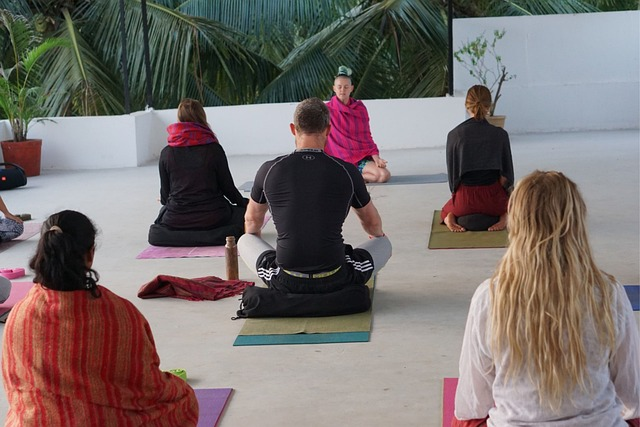
Origins and Meaning
Yoga Nidra has its roots in ancient Indian traditions, particularly in the yogic texts and teachings. It was popularized by Swami Satyananda Saraswati, who developed a structured approach to the practice in the 20th century. The term “Nidra” means sleep, but in this context, it refers to a state of conscious relaxation.
Benefits for Sleep
Yoga Nidra offers numerous benefits for sleep. It can help individuals with insomnia, stress-related sleep issues, and those seeking a better sleep quality. The practice promotes relaxation, reduces anxiety, and can improve overall sleep patterns.
Science Behind Yoga Nidra
How Yoga Nidra Influences Brain Waves
Yoga Nidra is known to influence brain waves. During the practice, individuals typically move into a state of consciousness where the brain transitions from beta (wakefulness) to alpha and even theta brainwave states. These slower brainwave patterns are associated with deep relaxation and are conducive to restful sleep.
Stress Reduction and Sleep Enhancement
Yoga Nidra has been scientifically studied for its stress-reducing and sleep-enhancing effects. It can help lower cortisol levels, reduce anxiety, and alleviate tension, all contributing to better sleep. Research suggests regular practice can improve sleep quality, making it a valuable tool for those struggling with sleep disorders or high-stress lifestyles.
How to Practice Yoga Nidra for Sleep

Preparing for Yoga Nidra
Creating a Relaxing Environment
Creating a soothing environment is essential to practicing Yoga Nidra effectively for sleep. Find a quiet, dimly lit room where you won’t be disturbed. You can use soft lighting, comfortable props like a mat or cushion, and a blanket to ensure you’re warm and cozy during the practice.
Ideal Timing for the Practice
Yoga Nidra can be practiced at various times, but it’s often recommended before bedtime to promote better sleep. However, you can also use it daily to reduce stress and enhance relaxation. Experiment with different times to find what works best for you.
Guided Yoga Nidra Meditation
Yoga Nidra is a unique form of meditation that’s all about reaching a state of deep relaxation while staying aware. Picture this: you’re lying down, super comfy, and guided through a meditation that takes you to a place where you’re neither fully awake nor completely asleep. It’s like being on the edge of consciousness, where your body gets to chill out in relaxation mode, but your mind is still gently active.
Here’s what happens during a typical Yoga Nidra session:
- Setting the Scene: You lie down in a comfortable position, often with pillows or blankets to make sure you’re super cozy. The aim is to reduce distractions and help your body relax completely.
- Setting an Intention: You start by thinking about an intention or a personal goal for your practice. This could be anything from finding peace to solving a problem on your mind.
- Body Scan: Then, you’re guided through a body scan. This means you’ll mentally visit different parts of your body, often starting from the toes and moving upwards. The idea is to be aware of each part and encourage it to relax.
- Breath Awareness: You’ll pay attention to your breathing next. This isn’t about changing your breath, just noticing it. It helps your mind to focus and deepens your relaxation.
- Guided Imagery: The guide might take you through a series of visualizations or ask you to imagine sensations, which helps create a deep sense of relaxation and peace.
- Emerging from the Practice: Finally, you slowly return to ordinary consciousness, keeping the relaxation and peace you’ve cultivated.
 Step-by-Step Instructions
Step-by-Step Instructions
- Lie down in Savasana (corpse pose) on your back with your arms and legs slightly apart.
- Close your eyes and take a few deep breaths to relax.
- Follow a guided Yoga Nidra meditation. You can find audio recordings or videos that lead you through the practice.
- The yoga instructor will typically take you through a body scan, asking you to focus on different body parts and release tension.
- You’ll be instructed to visualize and set intentions or affirmations.
- Follow the guide’s instructions, which may include breathing exercises and relaxation techniques.
- At the end of the session, slowly bring your awareness back to the room and your surroundings.
Yoga Nidra isn’t strictly about falling asleep, though it’s common to drift off. The aim is to stay in this liminal space – not fully awake, but not asleep. It’s in this space that deep relaxation and profound insights can happen.
People love Yoga Nidra for its ability to reduce stress, improve sleep, and bring a deep sense of peace. It’s like a power nap for your mind and soul, leaving you refreshed and rejuvenated.
Also Read: Sleep Yoga Pillow: Enhance Your Rest and Relaxation
Focusing on Breath and Relaxation
During Yoga Nidra, one of the critical elements is maintaining awareness of your breath and remaining relaxed. Focus on your breath, allowing it to become slow and steady. As you progress through the meditation, keep your attention on the guide’s instructions and your intention, all while staying in a state of deep relaxation.
In Yoga Nidra, the dance between breath awareness and relaxation plays a pivotal role. Here’s why it’s so crucial:
- Breath as an Anchor: Think of your breath as an anchor that keeps you grounded during the meditation. By focusing on your breathing, you’re helping your mind to stay present and not wander off. It’s normal for thoughts to pop up, but when you gently bring your focus back to your breath, you practice mindfulness.
- Relaxation Deepens: As you pay attention to your breath, something magical happens in your body. Your breathing starts to slow down and deepen, signaling your body to relax. This is where the stress and tension start melting away, and you enter a state of deep relaxation.
- Balancing Awareness and Relaxation: It’s a bit like walking a tightrope. On one side, the relaxation makes you feel like you’re drifting off to sleep. On the other, there’s the awareness part, where you’re conscious of your breath and the guide’s voice. Balancing these two helps you stay in that sweet spot of Yoga Nidra – profoundly relaxed but still aware.
- Following the Guide: The guide’s voice will lead you through the journey. Whether through a body scan, visualization, or simply reminding you to return to your breath, their instructions help you stay on track. This guidance is crucial, especially when you’re new to the practice and might find it challenging to stay focused.
- Honoring Your Intention: Amidst all this, your intention – the Sankalpa – remains a subtle undercurrent throughout the practice. It’s like a gentle reminder of why you’re doing Yoga Nidra in the first place, be it for better sleep, stress relief, or personal growth.
By maintaining this blend of breath awareness and deep relaxation, you’re priming your body and mind for rest, which is why Yoga Nidra can be such a powerful tool for improving sleep. It’s like preparing the perfect bed for your mind: comfortable, peaceful, and just right for drifting off into dreamland.
 Benefits of Yoga Nidra for Sleep
Benefits of Yoga Nidra for Sleep
Improved Sleep Quality
Deeper and More Restorative Sleep
One of the primary benefits of practicing Yoga Nidra for sleep is the potential for deeper and more restorative sleep. The guided meditation and relaxation techniques can help individuals reach a state of profound relaxation, allowing them to experience a more profound and rejuvenating sleep. This can lead to waking up feeling more refreshed and energized.
Reduced Sleep Disturbances
Yoga Nidra can also help reduce sleep disturbances. Promoting relaxation and reducing stress can alleviate common issues such as insomnia, night awakenings, and restless sleep. As a result, individuals are more likely to enjoy uninterrupted and restful sleep, which is crucial for overall sleep quality.
 Stress Reduction
Stress Reduction
Managing Stress and Anxiety
Yoga Nidra is highly effective in managing stress and anxiety, which often disrupt sleep. Individuals can reduce the daily stressors contributing to sleep problems by engaging in this practice. It allows them to address and manage their stress levels, creating a more conducive environment for restful sleep.
Relaxation Techniques
The relaxation techniques employed in Yoga Nidra are particularly beneficial for stress reduction. During the practice, individuals are guided to release tension and experience deep relaxation throughout their bodies. This not only eases physical stress but also calms the mind, reducing anxious thoughts and worries that can interfere with falling asleep and staying asleep. Combining body and mind relaxation makes it an effective tool for managing stress and improving sleep quality.
Tips for Incorporating Yoga Nidra into Your Bedtime Routine
Transforming your bedroom into a haven for Yoga Nidra can elevate your sleep routine to new heights. Here’s how to practice this restful meditation in the comfort of your own space, making it a regular part of your nightly ritual:
Consistency and Persistence
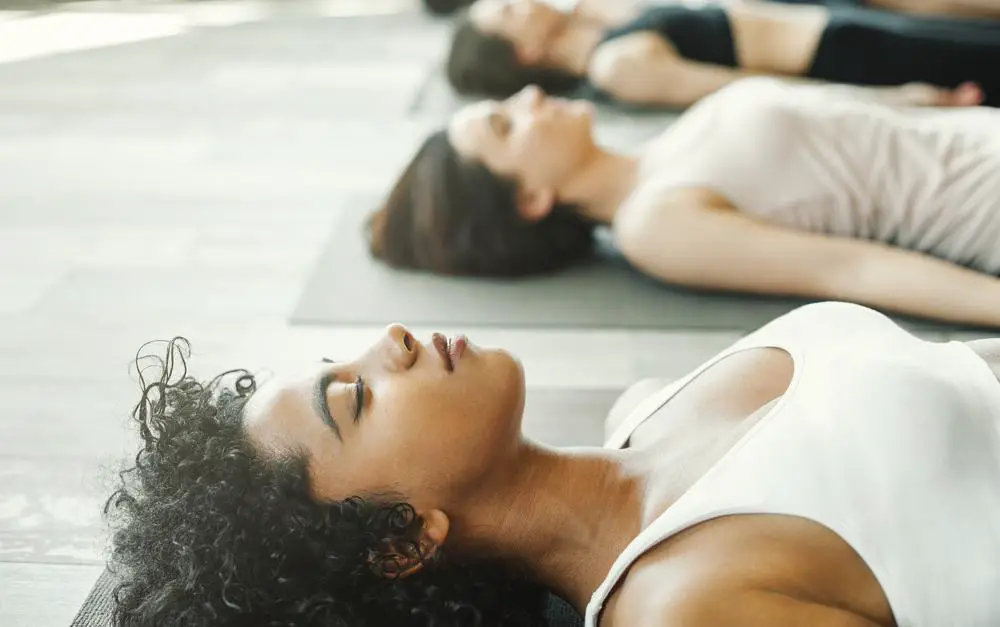
Building a Habit
- Schedule a regular time: Choose a specific time before bedtime to practice Yoga Nidra consistently. This helps your body and mind adapt to the routine, signaling the time to wind down and prepare for sleep.
- Create a calming ritual: Develop a pre-Nidra routine that relaxes you, such as dimming the lights, enjoying a soothing herbal tea, or taking a warm bath. These rituals can signal to your body that it’s time to unwind.
- Use reminders: Set alarms or notifications to remind you to practice Yoga Nidra. This can be especially helpful when you’re trying to establish the habit.
Dealing with Challenges
- Be patient: If you find staying consistent with Yoga Nidra challenging, remember that forming new habits can take time. Don’t get discouraged if you miss a session; try again the next day.
- Modify the practice: If you’re short on time, consider shorter Yoga Nidra sessions. Even a 10-15 minute practice can benefit relaxation and sleep.
- Seek support: Join a Yoga Nidra class or find a practice partner to help you stay motivated and accountable. Sharing the experience with others can make it more enjoyable and sustainable.
Create a Relaxing Environment:
- Set the Scene: Dim the lights, maybe light a candle or two (safely, of course), and ensure the room is at a comfortable temperature. You’re aiming for a calm, serene atmosphere.
- Minimize Distractions: Try to reduce noise and potential interruptions. Maybe use a ‘Do Not Disturb’ sign on your door if you share your space with others.
Get Comfortable:
- Find the Perfect Spot: Lie on your bed or a yoga mat, whatever feels most comfortable. Use pillows under your knees or head for added support.
- Cozy Up: Have a blanket handy. Your body temperature might drop during relaxation, and you want to stay comfortably warm.
Choose Your Guide:
- Guided Recordings: There are plenty of guided Yoga Nidra sessions available online. Find a voice and style that resonates with you, and use headphones for a more immersive experience.
- Self-Guidance: If you’re familiar with the practice, you can guide yourself. Remember the key elements: setting an intention, body scan, breath awareness, and visualizations.
Timing is Key:
- Right Before Bed: Practice Yoga Nidra as part of your bedtime routine. It’s a great way to signal to your body and mind that it’s time to wind down.
- Consistency Matters: Try to do it at the same time every night. This consistency helps your body and mind form a habit, making it easier to relax and fall asleep.
After the Session:
- Gently Transition: Don’t rush to get up after the session ends. Take a few minutes to enjoy the relaxation and slowly bring awareness back to your body.
- Reflect: If you like, keep a journal beside your bed to jot down any thoughts or feelings that arose during the practice.
Incorporating Yoga Nidra into your nightly routine can be a delightful and effective way to ease into sleep. It’s like giving yourself a gentle, loving hug before drifting off into dreamland. Sweet dreams!
Also Read: What Does the Bible Say About Meditation and Yoga: A Comprehensive Exploration
Complementary Practices

Combining Yoga Nidra with Other Sleep Aids
- Mindful use of supplements: If necessary, consider natural sleep aids like melatonin or herbal supplements, but use them mindfully and consult a healthcare professional for guidance.
- Aromatherapy: Use calming scents like lavender or chamomile essential oils in your bedroom to enhance relaxation during Yoga Nidra.
- White noise or soothing sounds: Play soft, calming music or white noise in the background during your practice if it helps you relax. You can also use sleep-inducing apps or devices.
Mindfulness and Sleep Hygiene
- Mindful bedtime routines: Incorporate mindfulness techniques into your bedtime routine, such as gentle stretching, progressive muscle relaxation, or deep breathing exercises before or after your Yoga Nidra practice.
- Sleep hygiene practices: Ensure your sleep environment is conducive to rest. Keep your bedroom dark, quiet, and at a comfortable temperature. Limit exposure to screens and electronic devices before sleep.
- Monitor caffeine and alcohol intake: Be mindful of your consumption of caffeine and alcohol, especially in the hours leading up to bedtime, as these substances can disrupt sleep.
Combining Yoga Nidra relaxation with other alternative and complementary medicine and practices and maintaining consistency in your bedtime routine can maximize its effectiveness in promoting deep sleep and overall well-being.
Also Read: Why Do Schizophrenics Sleep So Much? Unraveling the Mystery
Who Will Love Yoga Nidra for Sleep (and Who Might Not)
Yoga Nidra for sleep is a fantastic tool, but like any good thing, it’s not one-size-fits-all. Let’s dive into who’s likely to find their sleep sweet spot with it, and who might need to explore other options.
Perfect for the Restless and Stressed:
- The Overthinkers: Yoga Nidra can be a game-changer if your mind races with a million thoughts at bedtime. It helps slow the mental chatter, making it easier to drift off to sleep.
- Stress-Bunnies: Those grappling with daily stress or anxiety might find Yoga Nidra a perfect ally. It promotes deep relaxation, helping to ease stress and its sleep-stealing effects.
- Busy Bees: If you’re always on the go and find it hard to wind down, this practice can teach your body and mind how to relax, setting the stage for better sleep.
Great for Specific Health Conditions:
- Insomnia Fighters: People struggling with insomnia often find relief with Yoga Nidra, as it helps regulate sleep patterns.
- Pain Warriors: If chronic pain keeps you awake, the relaxation and mindfulness aspects of Yoga Nidra might help lessen the pain’s impact on your sleep.
Not Ideal for Some:
- Deep Sleepers: If you’re someone who hits the pillow and is out like a light, you might not need Yoga Nidra for sleep enhancement.
- Those Seeking Physical Exercise: Remember, Yoga Nidra is a meditation practice, not a physical workout. If you’re looking for something to tire you out physically, this might not be it.
- Severe Sleep Disorder Sufferers: While Yoga Nidra is beneficial, it’s not a cure-all. Those with severe sleep disorders should consult a healthcare professional for tailored advice.
In a nutshell, Yoga Nidra is a fantastic option for those seeking a natural way to improve sleep quality, reduce stress, and find a deeper sense of relaxation. It’s like a cozy, comforting blanket for your mind, perfect for anyone who needs help unwinding at the end of the day.
Conclusion
In conclusion, Yoga Nidra offers a holistic approach to improving sleep quality. Its benefits include more profound and restorative sleep, reduced sleep disturbances, effective stress management, and relaxation techniques that calm the mind and body. If you’re seeking a natural and accessible way to enhance your sleep, consider incorporating Yoga Nidra into your bedtime routine. Its simplicity and effectiveness make it a valuable tool for anyone looking to experience the benefits of guided meditation for a better night’s rest. Give it a try and discover the profound impact it can have on your sleep and overall well-being. Sweet dreams await!

FAQs
What exactly is Yoga Nidra?
Yoga Nidra, often called “yogic sleep,” is a meditation technique that guides you into deep relaxation while maintaining consciousness. It’s more about mental relaxation than physical postures.
How long does a typical Yoga Nidra session last?
Sessions can vary, but they typically last between 20 to 45 minutes. It’s all about finding a length that works for you and fits into your schedule.
Do I need any special equipment?
Not really. You only need a comfortable place to lie down, like a yoga mat or a bed. Some people like to use pillows, blankets, or an eye mask for extra comfort, but these aren’t essential.
Can Yoga Nidra replace sleep?
While it’s relaxing, it’s not a substitute for sleep. Think of it as a tool to enhance the quality of your sleep, not replace it.
Is it normal to fall asleep during Yoga Nidra?
Totally normal! Falling asleep can happen, especially when you’re new to the practice or extremely tired. Over time, you may find it easier to stay in the relaxed awareness that Yoga Nidra aims for.
How often should I practice Yoga Nidra?
This depends on your personal preference and schedule. Some people find it beneficial to practice daily, while others might do it a few times a week. Consistency can help enhance its benefits.
Can anyone practice Yoga Nidra?
Absolutely! It’s suitable for people of all ages and physical abilities. Since it’s a guided practice, it’s also beginner-friendly.
Can Yoga Nidra help with anxiety or stress?
Yes, many people find that Yoga Nidra helps significantly in reducing stress and anxiety levels due to its deep relaxation techniques.
- Left Arm Pain and Anxiety: Understanding the Relationship - November 23, 2023
- Anxiety Paralysis: Coping with Overwhelming Stress - November 23, 2023
- Anxious vs. Nervous: Differentiating Emotions and Responses - November 15, 2023
This site contains affiliate links to products. We will receive a commission for purchases made through these links.


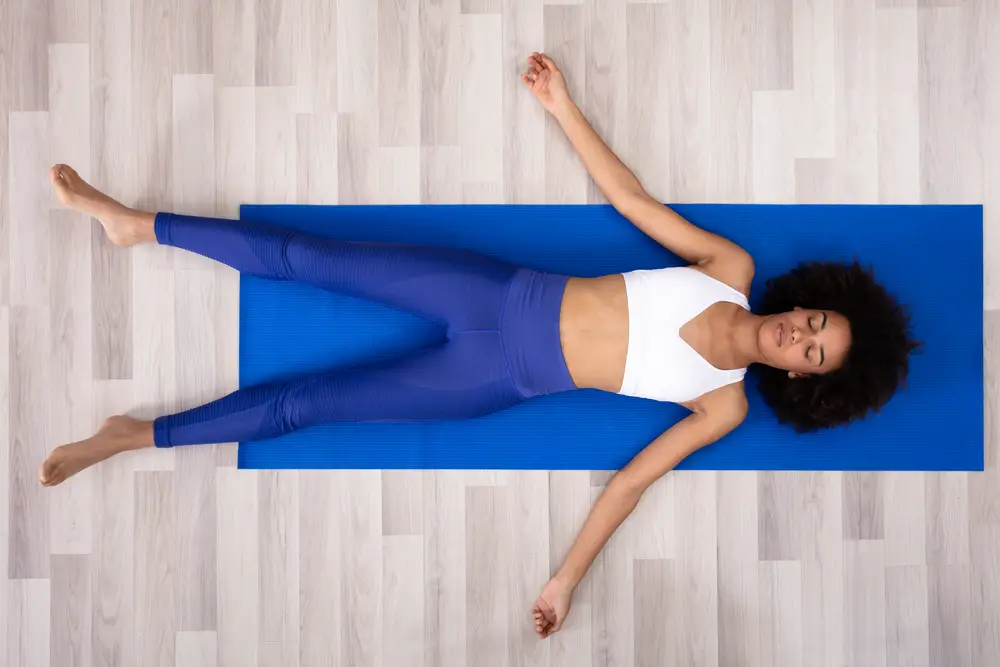 Step-by-Step Instructions
Step-by-Step Instructions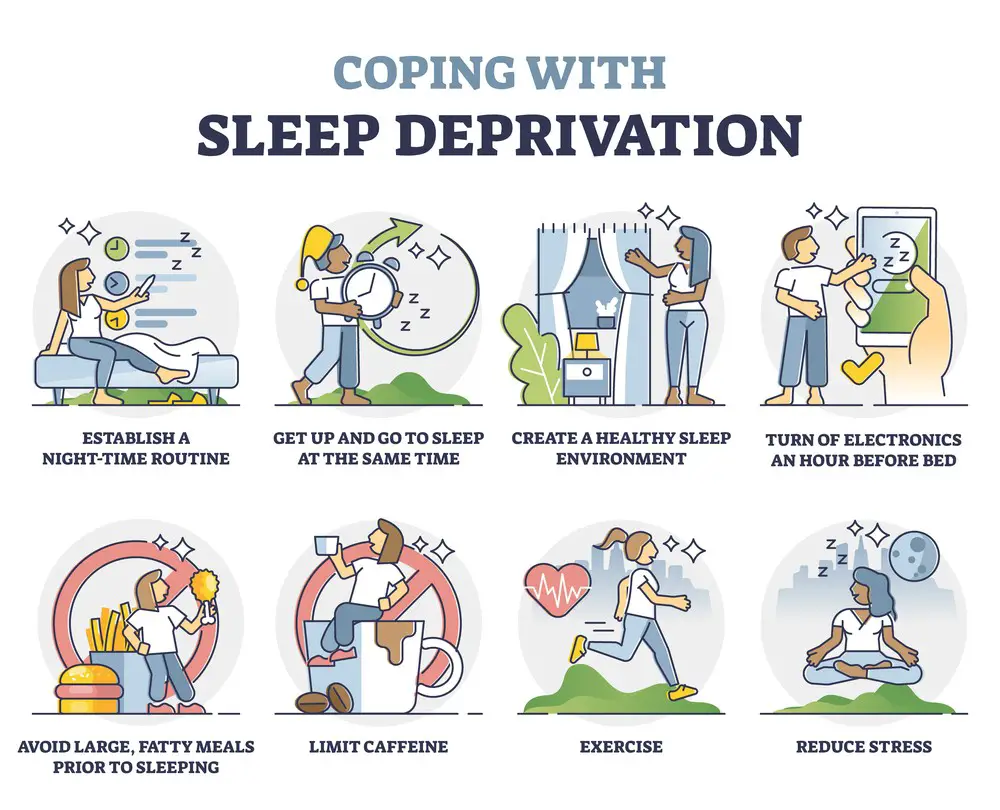 Benefits of Yoga Nidra for Sleep
Benefits of Yoga Nidra for Sleep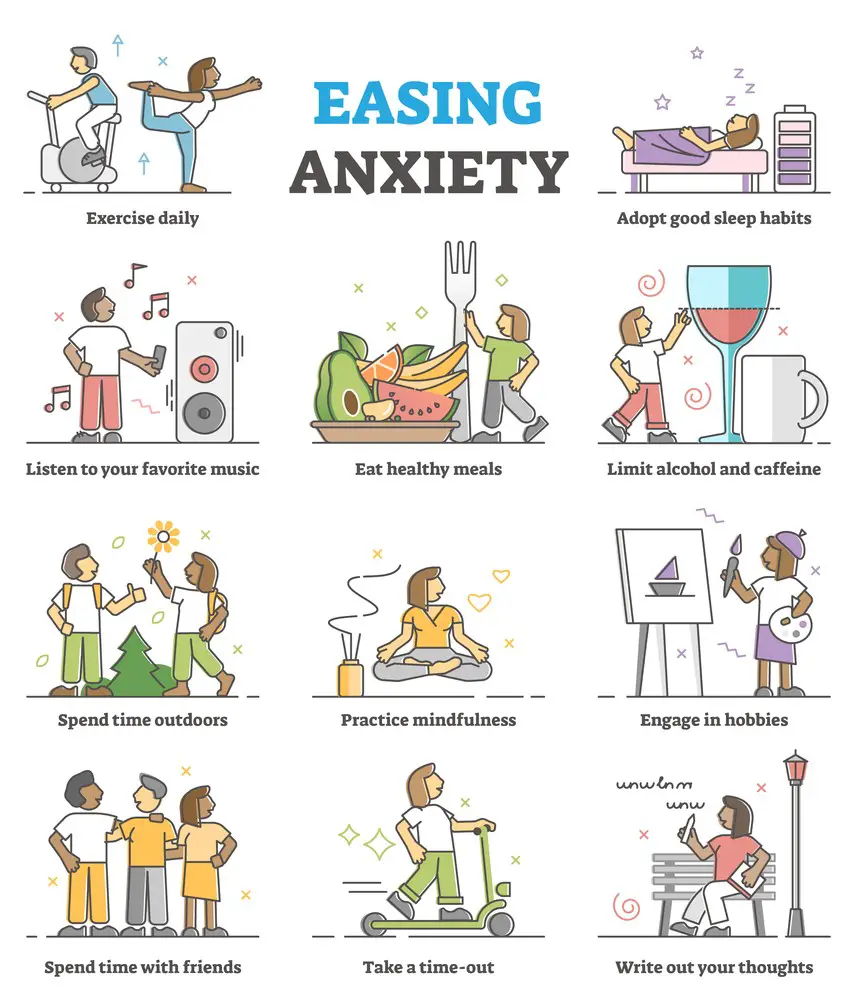 Stress Reduction
Stress Reduction
